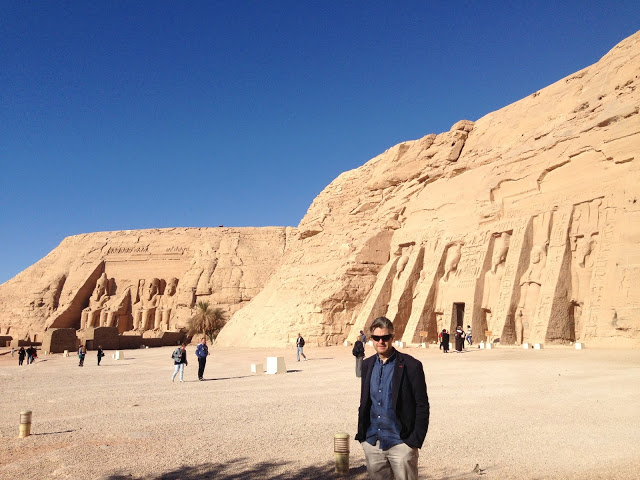
Valley Of The Kings
The Valley of the Kings is a valley in Egypt where, for a period of nearly 500 years from the 16th to 11th century BC, tombs were constructed for the Pharaohs and powerful nobles of the New Kingdom (the Eighteenth to the Twentieth Dynasties of Ancient Egypt) The valley stands on the west bank of the Nile, opposite Thebes (modern Luxor), within the heart of the Theban Necropolis. The wadi consists of two valleys, East Valley (where the majority of the royal tombs situated) and West Valley.
With the 2006 discovery of a new chamber (KV63), and the 2008 discovery of 2 further tomb entrances, the valley is known to contain 63 tombs and chambers (ranging in size from a simple pit to a complex tomb with over 120 chambers), and was the principal burial place of the major royal figures of the Egyptian New Kingdom, together with those of a number of privileged nobles. The royal tombs are decorated with scenes from Egyptian mythology and give clues to the beliefs and funerary rituals of the period. All of the tombs seem to have been opened and robbed in antiquity, but they still give an idea of the opulence and power of the rulers of this time.
This area has been a focus of archaeological and egyptological exploration since the end of the eighteenth century, and its tombs and burials continue to stimulate research and interest. In modern times the valley has become famous for the discovery of the tomb of Tutankhamun (with its rumours of the Curse of the Pharaohs, and is one of the most famous archaeological sites in the world. In 1979, it became a World Heritage Site, along with the rest of the Theban Necropolis. Exploration, excavation and conservation continues in the valley, and a new tourist centre has recently been opened.
The official name for the site in ancient times was The Great and Majestic Necropolis of the Millions of Years of the Pharaoh, Life, Strength, Health in The West of Thebes (see below for the hieroglyphic spelling), or more usually, Ta-sekhet-ma’at (the Great Field).
At the start of the Eighteenth Dynasty, only the kings were buried within the valley in large tombs; when a non-royal was buried, it was in a small rock cut chamber, close to the tomb of their master. Amenhotep III’s tomb was constructed in the Western Valley, and while his son Akhenaten moved his tomb’s construction to Amarna, it is thought that the unfinished WV25 may have originally been intended for him. With the return to religious orthodoxy at the end of the Eighteenth Dynasty, Tutankhamun, Ay and then Horemheb returned to the royal necropolis.
The Nineteenth and Twentieth Dynasties saw an increase in the number of burials (both here and in the Valley of the Queens), with Ramesses II and later Ramesses III constructing a massive tomb that was used for the burial of his sons (KV5 and KV3 respectively). There are some kings that are not buried within the valley or whose tomb has not been located: Thutmose II may have been buried in Dra’ Abu el-Naga’ (although his mummy was in the Deir el-Bahri tomb cache), Smenkhkare’s burial has never been located, and Ramesses VIII seems to have been buried elsewhere.
In the Pyramid Age the tomb of the king was associated with a mortuary temple located close to the pyramid. As the tomb of the king was hidden, this mortuary temple was located away from the burial, closer to the cultivation facing towards Thebes.[18] These mortuary temples became places visited during the various festivals held in the Theban necropolis, most notably the Beautiful festival of the valley, where the sacred barques of Amun-Re, his consort Mut and son Khonsu left the temple at Karnak in order to visit the funerary temples of deceased kings on the West Bank and their shrines in the Theban Necropolis.
The tombs were constructed and decorated by the workers of the village of Deir el-Medina, located in a small wadi between this valley and the Valley of the Queens, facing Thebes. The workers journeyed to the tombs via routes over the Theban hills. The daily lives of these workers are quite well known, recorded in tombs and official documents. Amongst the events document is perhaps the first recorded worker’s strike, detailed in the Turin strike papyrus.
Most of the tombs are not open to the public (18 of the tombs can be opened, but they are rarely open at the same time), and officials occasionally close those that are open for restoration work. The number of visitors to KV62 has led to a separate charge for entry into the tomb. The West Valley has only one open tomb—that of Ay—and a separate ticket is needed to visit this tomb. The tour guides are no longer allowed to lecture inside the tombs and visitors are expected to proceed quietly and in single file through the tombs. This is to minimize time in the tombs and prevent the crowds from damaging the surfaces of the decoration. Photography is no longer allowed in the tombs.
In 1997, 58 tourists and 4 Egyptians were massacred at nearby Deir el-Bahri by Islamist militants from Al-Gama’a al-Islamiyya. This led to an overall drop in tourism in the area.
On most days of the week an average of four to five thousand tourists visit the main valley. On the days that the Nile Cruises arrive the number can rise to around nine thousand. These levels are expected to rise to 25,000 by 2015. The West Valley is much less visited, as there is only one tomb that is open to the public.
No Comments
Leave a Reply:
You must be logged in to post a comment.






